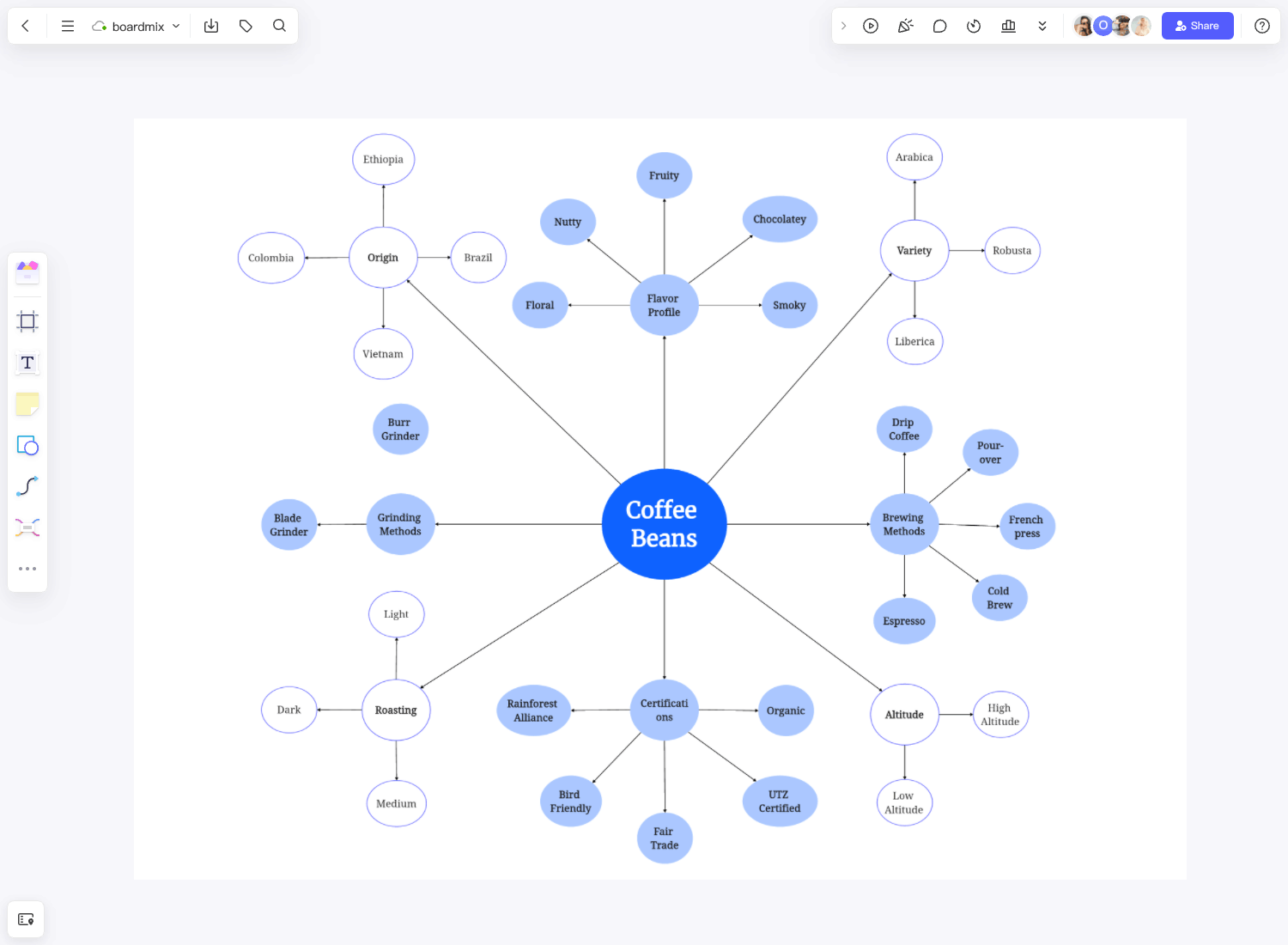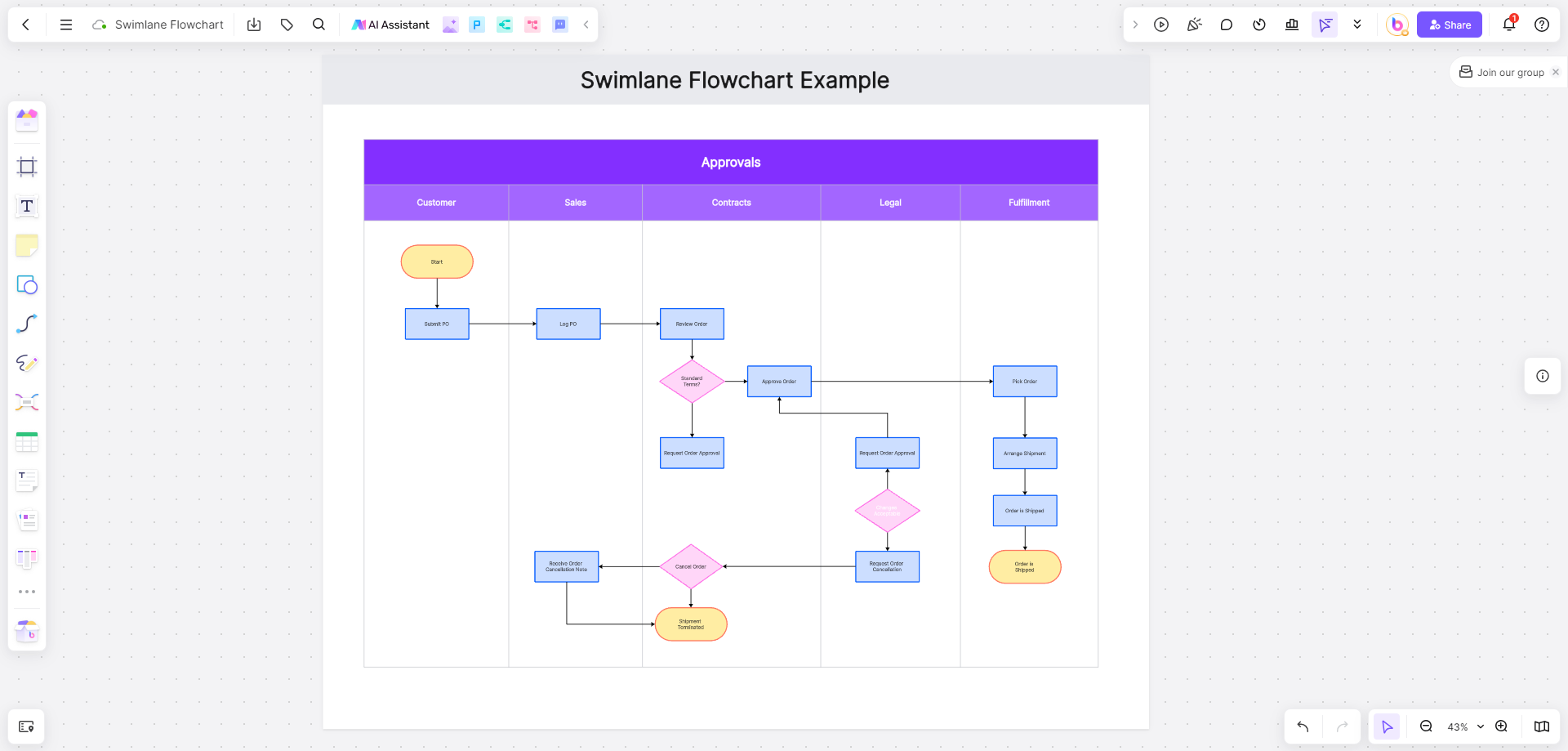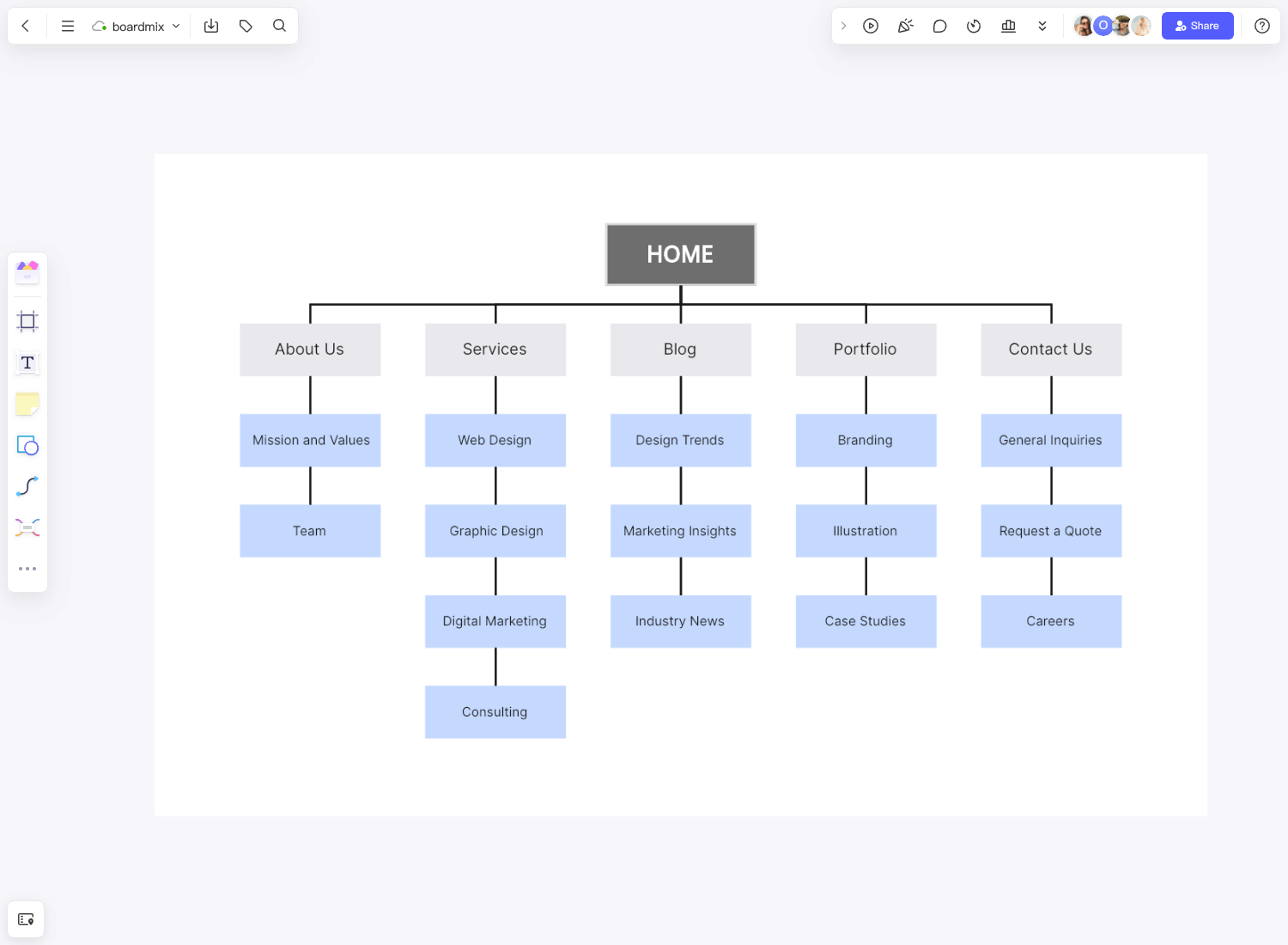Whether for school, work, or fun, a bubble map allows you to provide adjectives to the one main topic in question. It's an excellent way to center one's thoughts so they can work through problems efficiently. The bubble map is also a chance to flesh out the creative juices, expand the descriptive word options, and improve writing skills. Read this article to learn more about this template and how to create it effectively.
What is a bubble map?

A bubble map is a visual illustration of a topic, usually a noun, surrounded by adjectives used to describe it. You can connect the bubbles with related concepts by using lines to show the relationship between the two. Bubble maps are usually used as a brainstorming tool to generate fresh ideas and resolve conflicts.
The look of a bubble map template is so straightforward that its purpose is almost unlimited. You can even be playful while structuring your diagram and use photos and stickers to represent your bubbles and the main topic at the center.
When to use a bubble map?
You can draw a bubble map whenever you're curious about something or if you want to deepen your understanding of a subject. Here are a few significant scenarios where a bubble map will be necessary.
- Fiction. You can pick your favorite character from any series, movie, novel, or book and perform a bubble map template analysis by listing their attributes with words that would easily describe them.
- Science studies in school. Science lessons or any subject can be challenging for some students. Teachers can have their students adopt the bubble map to understand specific chapters better. For example, in a biology class, you can simplify the phases of human development from infants to toddlers and children to adults.
- Understanding abstract concepts. There are several vague objects, illustrations, and ideas wherever you go. For example, a painting. Each audience has respective interpretations of one painting. When looking at the artwork, you can use a bubble map to describe your feelings.
- Understanding roles. Professionals and businesses also use a bubble map template to map out the duties and responsibilities of employees. This allows organizations to define the person's scope of work and notify them of the tasks demanded of them daily.
Benefits of using a bubble map template
Using the bubble template allows you to do the following:
- Better brainstorming. You can maximize your brainstorming sessions with a bubble map template. The structure lets you add connected bubbles to clarify and simplify concepts.
- Improved critical thinking. In most cases, a bubble map looks like an unstructured layout. It's a good thing since you can quickly think of new ideas, build new connections between two existing ideas, and write them without disrupting other sections in the map.
- Excellent visualization. The map might involve several bubbles, but the layout allows teams to recall ideas during meetings easily. If you created the bubble map template online, you can share the document through a link and let other team members edit the template.
- Better writing skills. You're also honing your writing skills as you explore different adjectives to describe the topic in question in the bubble map template. Most importantly, it increases your critical thinking abilities, which are integral to the professional setting.
Gain Insights from Bubble Mapping Examples
Let's delve into some practical examples where Bubble Mapping has been effectively used:
Sales Growth Strategy Bubble Map
This bubble map focuses on developing a comprehensive sales growth strategy. The main bubbles include Market Expansion, Product Diversification, and Customer Retention. Under Market Expansion, you can delve into specifics like Target Regions and New Demographics. Similarly, Product Diversification includes details about introducing New Product Lines and Features. The Customer Retention bubble can be expanded to include initiatives such as Loyalty Programs and Customer Support.
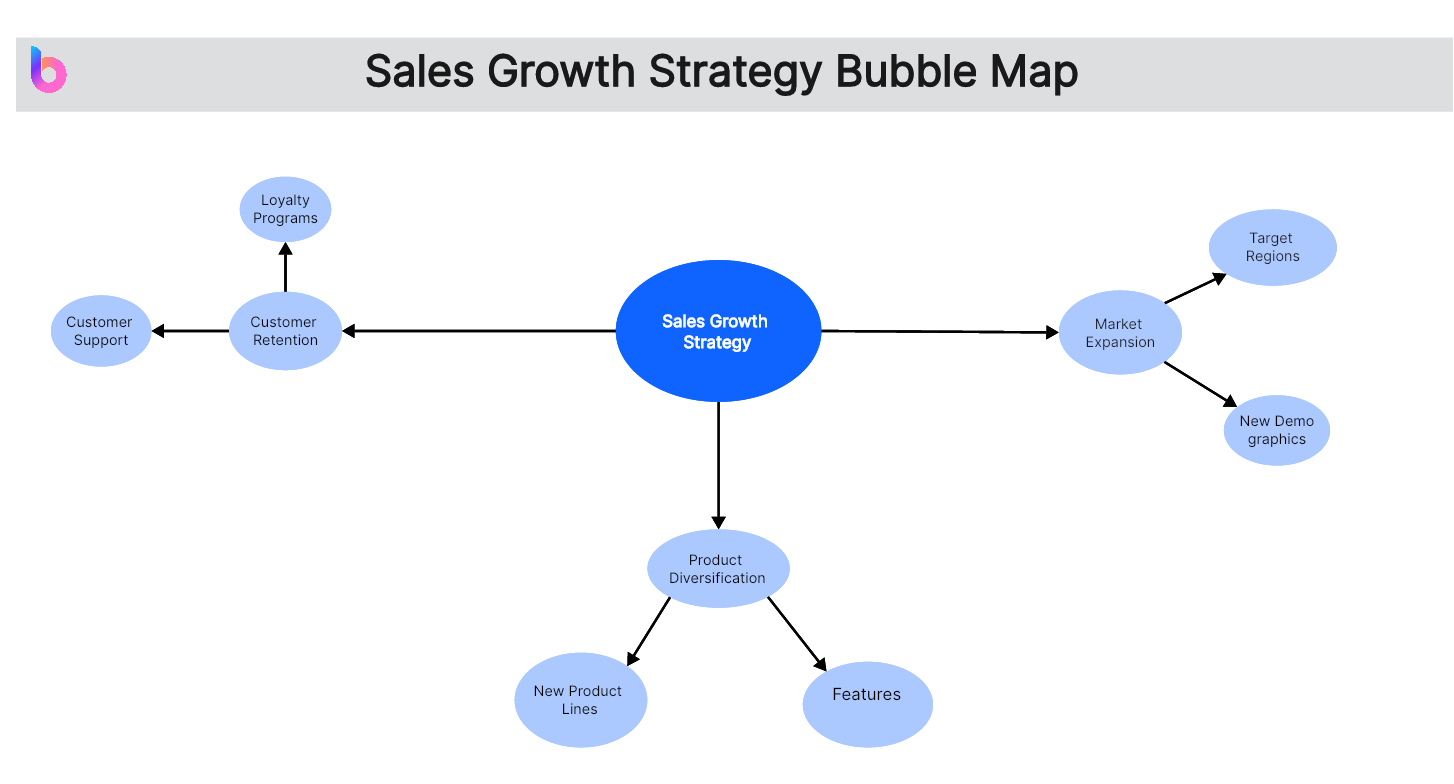
Employee Well-being Program Bubble Map
This bubble map revolves around creating an effective Employee Well-being Program. The main bubbles encompass Physical Health, Mental Health, and Work-Life Balance. For instance, under Physical Health, you can explore Fitness Classes and Health Screenings. Mental Health can be further detailed with offerings like Counseling Services and Stress Management. The Work-Life Balance bubble includes features like Flexible Schedules and Remote Work Options.

Educational Technology Integration Bubble Map
This bubble map outlines the integration of technology in education. The main bubbles consist of Classroom Tools, Teacher Training, and Student Engagement. Within Classroom Tools, you can specify Interactive Whiteboards and Educational Apps. Teacher Training may include details about workshops and online courses. Student Engagement can be broken down into components like Gamified Learning and Virtual Field Trips.
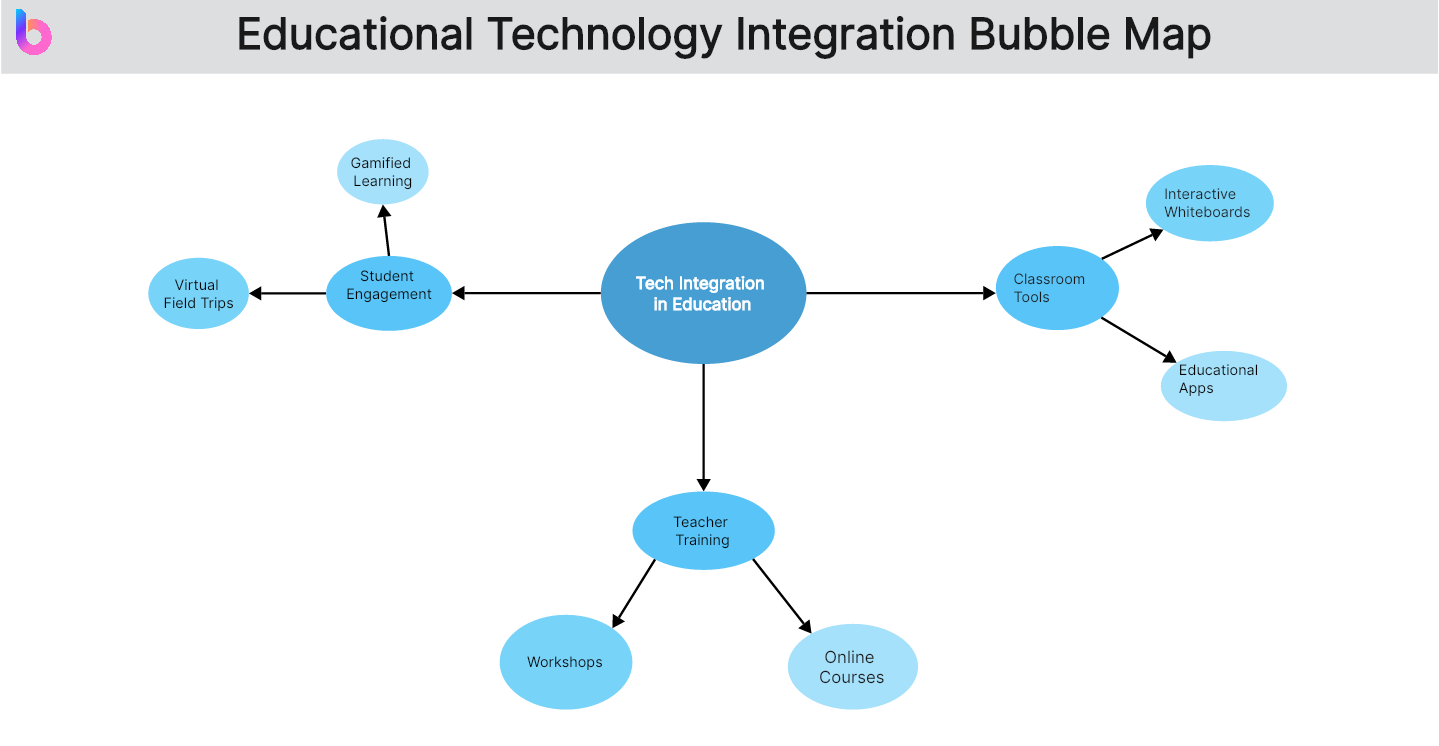
How to use the bubble map template in Boardmix?
As mentioned previously, you can explore various bubble map templates online. Boardmix lets users exercise creativity by maximizing its library's bubble map template.
Step 1: Gather Your Data
The first step in creating a bubble map is gathering and organizing your data. For a bubble map, you typically need data for at least three variables - the x-axis, y-axis, and the size of the bubbles. If you wish to add a fourth dimension to your map, you'll need another variable to denote bubble color.
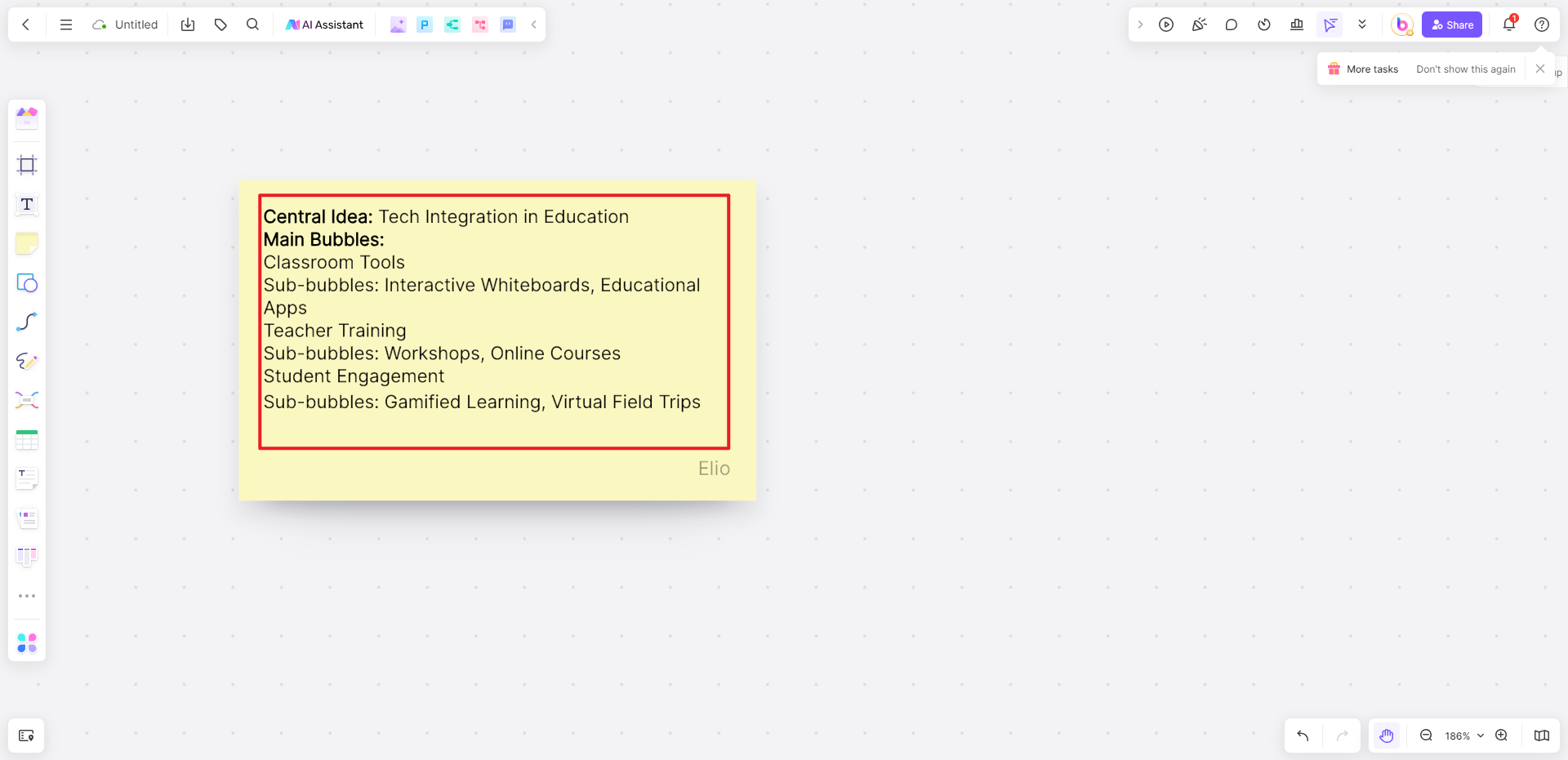
Step 2: Access the Boardmix Bubble Map Template
After gathering and preparing your data, access the Boardmix platform and locate the bubble map template. The user-friendly interface of Boardmix makes it easy to find and select templates. Choose the Bubble Map template from the selection.
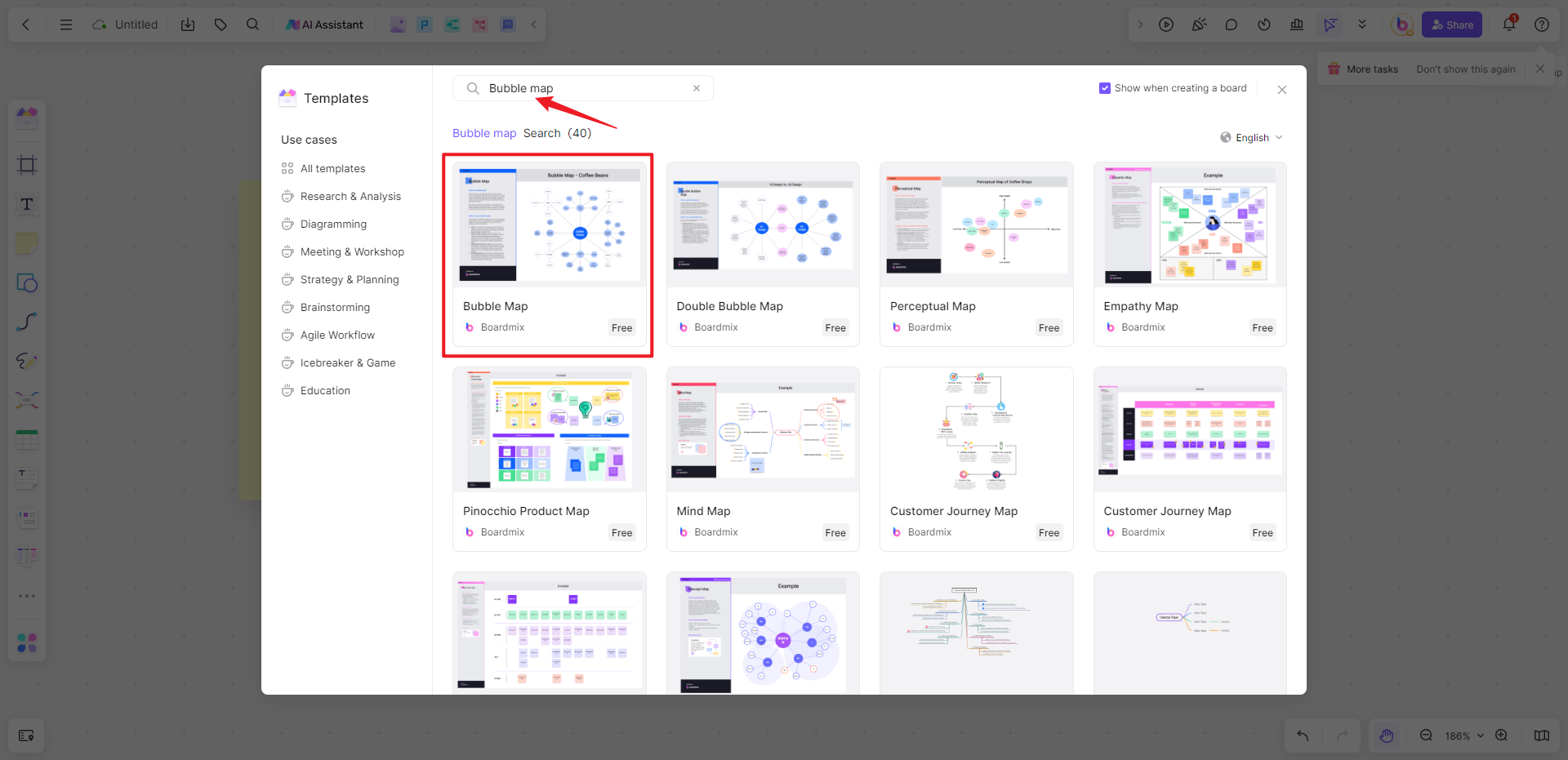
Step 3: Input Your Data
Once you've selected the bubble map template, it's time to input your data. You can do this by manually entering the values into the corresponding fields. Ensure that you've matched the right variables with the correct dimensions - x-axis, y-axis, bubble size, and (if applicable) bubble color.
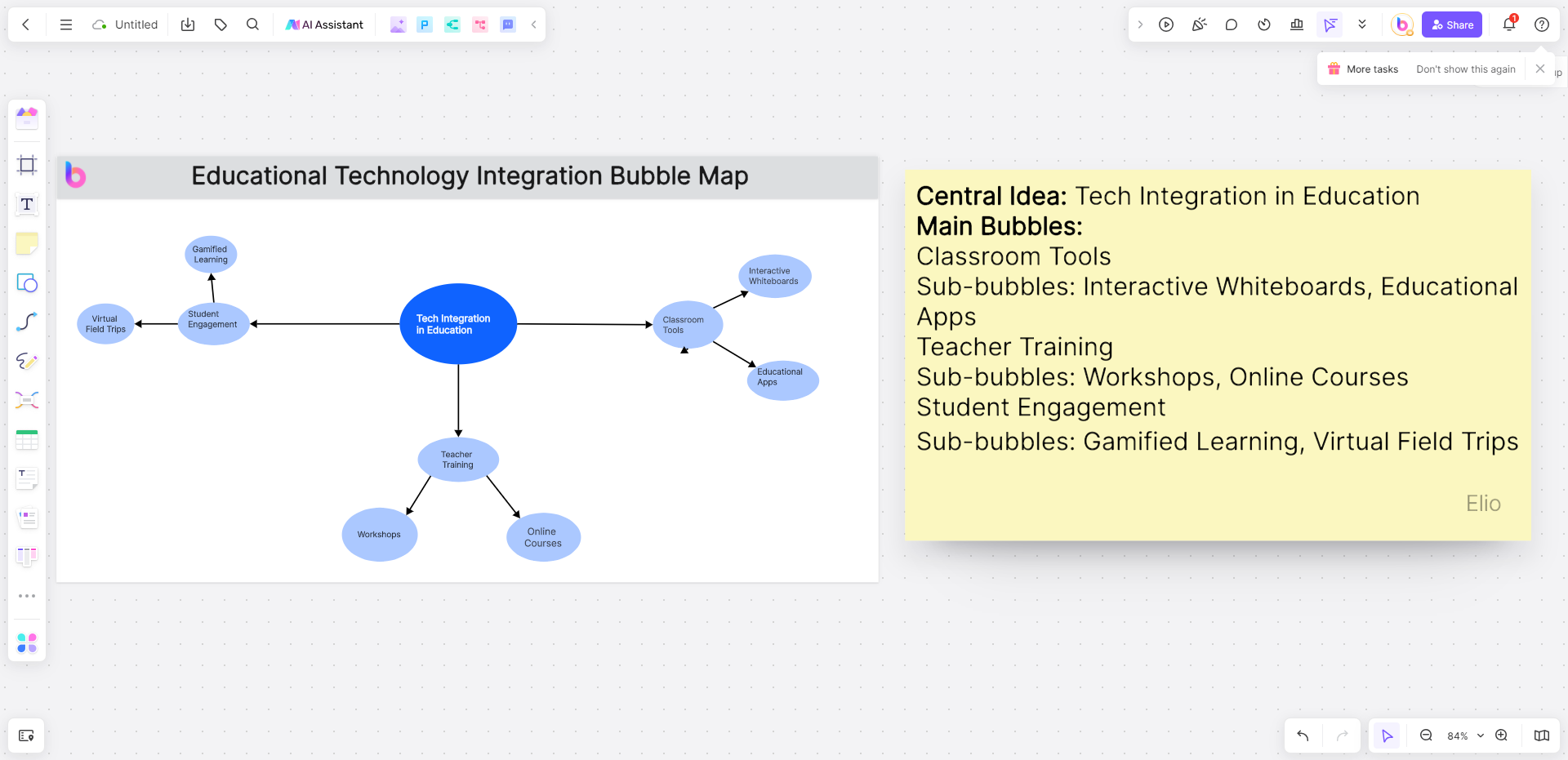
Step 4: Customize Your Bubble Map
After feeding in your data, it's time to customize your map to match your requirements. You can adjust the sizes of the bubbles, choose different color schemes, and customize the labels for clarity and aesthetic appeal. Boardmix allows you to tweak several aspects of your map to best represent your data.

Step 5: Share Your Bubble Map
Finally, share your bubble map with other stakeholders. Boardmix allows you to share files via a link with specialized permission. In this way, you can work with others in real time and update the file regularly.

By using the Boardmix template, you can create a sophisticated, clear, and insightful bubble map with relative ease. This tool allows you to explore trends, relationships, and patterns in your data visually, making it easier to draw conclusions and make informed decisions. Just sign up and give it a try!
FAQs about bubble map
What is a bubble map for?
A bubble map is a visual tool invented to help people develop their thoughts, improve writing skills, expand creativity, brainstorm new ideas, and improve writing skills. The template lets you explore vague and broad concepts resulting in a better understanding of ideas. It's a versatile diagramming tool used in various fields in education and corporate, to name a few.
Is a bubble map a type of mind map?
Yes. A bubble map is closely related to a mind map. However, the mind map can be a complex visual illustration, especially if you add various branches and different connections. As you know, the simple bubble map only includes one topic with adjectives surrounding it. The bottom line is that you can use the mind-mapping process to create a simple bubble map template.



